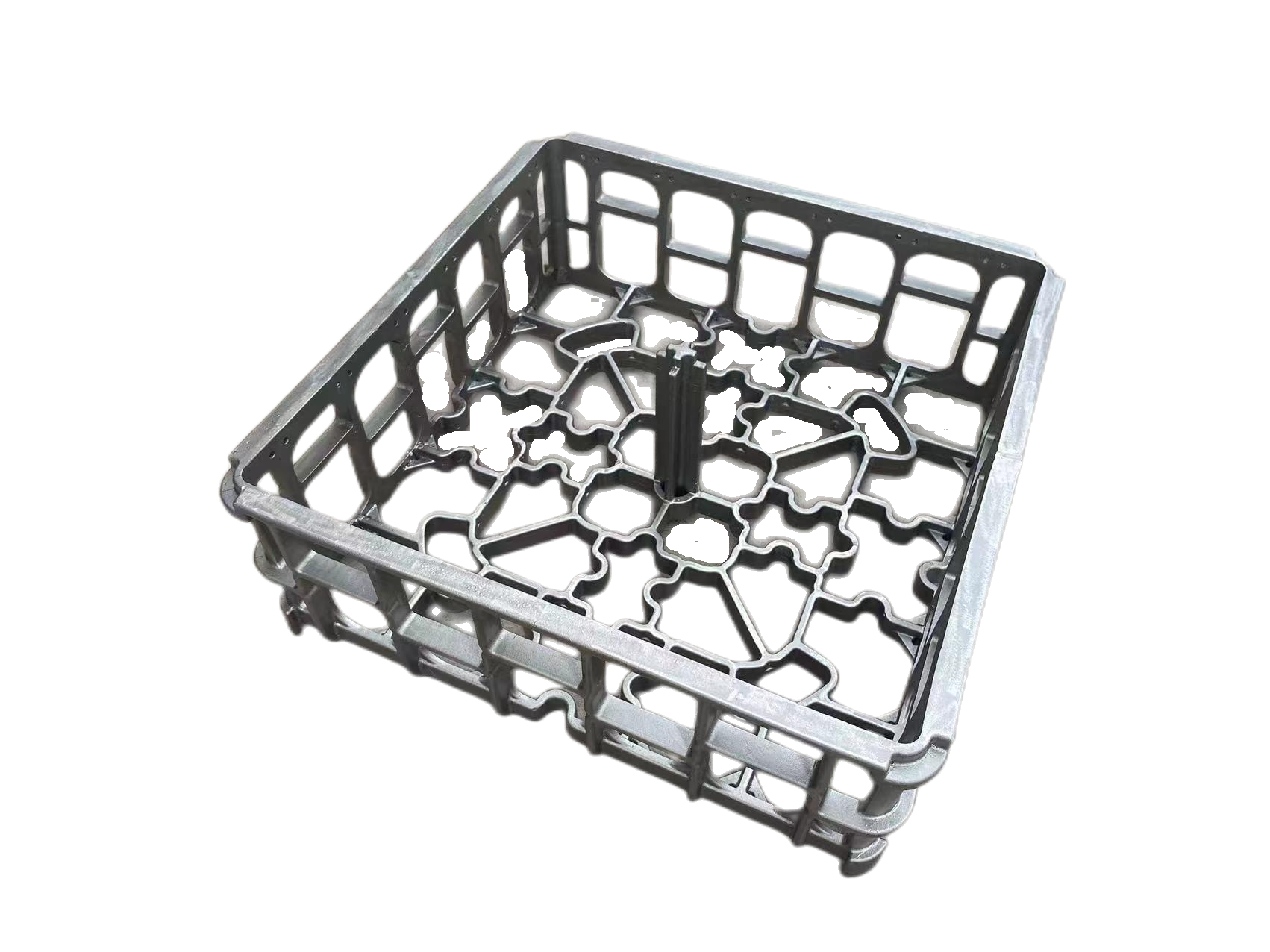Introduction: The Material That Defies the Elements
In the demanding world of high-temperature manufacturing and processing, ordinary materials quickly reach their limits. As temperatures soar beyond 500°C, conventional steels lose their strength, oxidize rapidly, and eventually fail. This is where heat resistant steel steps in—a specialized class of materials engineered to maintain their structural integrity and performance in environments that would destroy ordinary metals.
From the intense heat of industrial furnaces to the corrosive atmospheres of chemical processing plants, heat resistant steels form the backbone of modern high-temperature operations. Understanding these remarkable materials isn't just an academic exercise—it's essential knowledge for engineers, designers, and operators who work where temperatures push materials to their absolute limits.
1. The Fundamental Science Behind Heat Resistant Steel
1.1. What Makes Steel "Heat Resistant"?
Heat resistant steels achieve their remarkable properties through carefully balanced chemical compositions and precise manufacturing processes. Unlike ordinary steels that begin to rapidly lose strength above 300°C, heat resistant steels maintain their mechanical properties and resist degradation through several key mechanisms:
Microstructural Stability:
Formation of stable carbides that resist coarsening at high temperatures
Maintenance of austenitic or martensitic structures under thermal stress
Prevention of phase transformations that cause weakening
Control of grain growth through precipitation strengthening
Protective Scale Formation:
Development of adherent, dense oxide layers (primarily Cr₂O₃)
Self-healing capability when the protective layer is damaged
Resistance to spalling and cracking during thermal cycling
Low oxidation rates even after thousands of hours of exposure
1.2. The Temperature Performance Spectrum
Understanding temperature thresholds is crucial for proper material selection:
Intermediate Temperature Range (500-600°C):
Applications: Steam piping, pressure vessels, certain heat exchangers
Typical materials: Low-alloy steels with Molybdenum and Chromium
Key concern: Creep strength rather than oxidation resistance
High-Temperature Range (600-900°C):
Applications: Furnace components, heat treatment fixtures, exhaust systems
Typical materials: Austenitic stainless steels (304H, 309, 310)
Key concerns: Oxidation resistance and structural stability
Very High-Temperature Range (900-1200°C):
Applications: Radiant tubes, burner nozzles, reformer furnaces
Typical materials: High-alloy steels like DIN 1.4848, HK and HP series
Key concerns: Cyclic oxidation, carburization resistance, creep rupture
2. Key Properties That Define Performance
2.1. Mechanical Properties at Elevated Temperatures
Creep Resistance:
The ability to withstand constant stress at high temperatures over extended periods
Measured by creep rupture strength (stress to cause failure in a given time)
Critical for load-bearing components in continuous operation
Influenced by carbide-forming elements like Nb, V, and Ti
Tensile and Yield Strength Retention:
Conventional steels may lose over 50% of room temperature strength by 500°C
Heat resistant steels maintain significant strength up to their design limits
Important for structural applications and pressure containment
Thermal Fatigue Resistance:
Ability to withstand repeated heating and cooling cycles
Critical for batch processes and intermittent operations
Dependent on thermal expansion coefficient and toughness
2.2. Surface and Environmental Resistance
Oxidation Resistance:
Formation of protective chromia (Cr₂O₃) scales
Silicon and aluminum additions enhance protection
Measured by weight gain or metal loss over time at temperature
Typically acceptable: <0.1 mm/year metal loss
Carburization Resistance:
Critical in hydrocarbon-rich atmospheres (heat treating, petrochemical)
Nickel content crucial for reducing carbon absorption
Prevents embrittlement and loss of ductility
Sulfidation and Other Chemical Attacks:
Resistance to sulfur-containing atmospheres
Performance in chlorine, nitrogen, and other reactive environments
Compatibility with molten salts and metals
3. Major Classifications and Common Grades
3.1. Ferritic and Martensitic Grades
Low-Alloy Chromium-Molybdenum Steels:
Grades: T/P11, T/P22, T/P91
Temperature range: Up to 600°C
Applications: Power plant piping, pressure vessels
Advantages: Good thermal conductivity, lower thermal expansion
Martensitic Stainless Steels:
Grades: 410, 420, 440 series
Temperature range: Up to 650°C
Applications: Turbine blades, fasteners, steam valves
Advantages: High strength, good wear resistance
3.2. Austenitic Stainless Steels
Standard Austenitic Grades:
304H, 316H, 321H, 347H
Temperature range: Up to 800°C
Applications: Heat exchangers, superheaters, process piping
Advantages: Good general corrosion resistance, formability
High-Temperature Austenitic Grades:
309S, 310S (25Cr-20Ni)
Temperature range: Up to 1100°C
Applications: Furnace parts, radiant tubes, burner components
Advantages: Excellent oxidation resistance, good strength
3.3. Specialized Heat Resistant Alloys
Cast Heat Resistant Alloys:
HP Series (25Cr-35Ni-Nb)
HK Series (25Cr-20Ni)
DIN 1.4848 (GX40NiCrSiNb38-18)
Applications: Furnace radiant tubes, reformer tubes, fixture grids
Nickel-Based Alloys:
Alloy 600, 601, 800H/HT
Temperature range: Up to 1200°C
Applications: Most demanding high-temperature applications
Advantages: Superior strength and environmental resistance
4. Material Selection Guide for Specific Applications
4.1. Temperature-Based Selection Matrix
500-600°C Range:
Low-alloy steels (T/P11, T/P22)
Cost-effective solution for many applications
Adequate strength and oxidation resistance
600-800°C Range:
Austenitic stainless steels (304H, 321H, 347H)
Good balance of properties and cost
Suitable for most general high-temperature applications
800-1000°C Range:
Higher alloy austenitics (309S, 310S)
Cast alloys (HK series)
Where oxidation resistance becomes critical
1000-1200°C Range:
High-performance cast alloys (HP series, DIN 1.4848)
Nickel-based alloys for most demanding applications
Where both strength and environmental resistance are vital
4.2. Application-Specific Recommendations
Furnace Components and Fixtures:
Radiant tubes: HP mod, DIN 1.4848
Furnace rolls: 309S, 310S, or centrifugal cast alloys
Baskets and trays: 304H, 309S depending on temperature
Retorts and muffles: 310S or cast equivalents
Power Generation Equipment:
Superheaters and reheaters: T/P91, T/P92, 347H
Steam piping: Matching base metal and weldments
Turbine components: Martensitic steels for high strength
Petrochemical Processing:
Reformers and cracking furnaces: HP mod alloys
Transfer lines: 304H, 321H, 347H
Fired heater tubes: Various grades based on process conditions
5. Manufacturing and Fabrication Considerations
5.1. Casting vs. Wrought Products
Cast Heat Resistant Steels:
Advantages: Complex geometries, better high-temperature strength
Applications: Furnace fixtures, complex valve bodies, radiant tubes
Considerations: Pattern costs, minimum thickness limitations
Wrought Heat Resistant Steels:
Advantages: Better surface finish, more consistent properties
Applications: Plate, tube, pipe, bar stock for fabrication
Considerations: Forming limitations, weldability concerns
5.2. Welding and Joining Technologies
Pre-Welding Considerations:
Material matching and dissimilar metal welding
Pre-heat requirements based on composition
Joint design for high-temperature service
Cleanliness and contamination prevention
Welding Processes and Procedures:
SMAW (Stick welding): Versatile for field work
GTAW (TIG): Highest quality, critical applications
SMA/GTAW combinations: Efficiency and quality balance
Post-weld heat treatment requirements
Common Welding Challenges:
Hot cracking in fully austenitic compositions
Sigma phase formation in high-chromium alloys
Carbide precipitation in sensitization range
Weld metal vs. base metal property matching
5.3. Heat Treatment Requirements
Solution Annealing:
Purpose: Dissolve carbides, homogenize structure
Temperature ranges: 1050-1150°C for most austenitic grades
Cooling requirements: Typically rapid to prevent precipitation
Stress Relieving:
Applications: After welding or heavy machining
Temperature ranges: Typically 850-900°C
Considerations: Below sensitization range for stabilized grades
6. Real-World Applications and Case Studies
6.1. Heat Treatment Industry Applications
Car Bottom Furnace Components:
Trays and fixtures: 309S, 310S cast or wrought
Load requirements: 5-50 tons at 800-1100°C
Life expectancy: 2-5 years with proper maintenance
Failure modes: Creep, thermal fatigue, oxidation
Continuous Belt Furnaces:
Belt materials: 314, 330 alloys
Rollers and supports: Centrifugal cast alloys
Atmosphere compatibility considerations
Maintenance and replacement scheduling
6.2. Power Generation Applications
Boiler and Steam System Components:
Superheater tubes: T91, 347H
Headers and piping: Matching materials
Water chemistry considerations
Inspection and life assessment techniques
Gas Turbine Components:
Combustion systems: High nickel alloys
Transition pieces: Cobalt-based alloys
Housing and structural components: 309S, 310S
6.3. Petrochemical and Processing Applications
Ethylene Cracking Furnaces:
Radiant tubes: HP mod alloys
Operating conditions: 850-1100°C with steam/hydrocarbon
Design life: 100,000+ hours
Failure analysis and prevention strategies
Hydrogen Reformers:
Catalyst tubes: HP mod alloys
Outlet collectors: Similar materials
Support systems and hangers
Inspection and remaining life assessment
7. Maintenance, Inspection, and Life Extension
7.1. Performance Monitoring Techniques
Non-Destructive Testing Methods:
Ultrasonic thickness measurement
Dye penetrant and magnetic particle inspection
Radiographic examination for internal defects
Replication metallography for microstructural assessment
Condition Monitoring Parameters:
Oxidation and metal loss rates
Creep strain measurement and monitoring
Microstructural degradation tracking
Dimensional changes and distortion
7.2. Life Assessment and Prediction
Remaining Life Evaluation Methods:
Larson-Miller parameter calculations
Microstructural degradation assessment
Creep damage evaluation
Oxidation/corrosion penetration measurements
Life Extension Strategies:
Operating parameter optimization
Repair and refurbishment techniques
Protective coating applications
Component replacement planning
8. Future Trends and Developments
8.1. Advanced Material Development
Nanostructured Alloys:
Oxide dispersion strengthened (ODS) steels
Nanoparticle reinforcement
Grain boundary engineering
Improved high-temperature strength
Computational Material Design:
CALPHAD methods for alloy development
Phase transformation modeling
Property prediction algorithms
Accelerated development cycles
8.2. Manufacturing Innovations
Additive Manufacturing:
Complex geometry capabilities
Graded material compositions
Reduced lead times for replacements
Custom alloy development
Surface Engineering:
Advanced coating technologies
Laser surface modification
Diffusion coatings for enhanced resistance
Thermal barrier coating systems
Conclusion: Mastering the Art of High-Temperature Material Selection
Heat resistant steels represent one of the most critical material families in modern industrial operations. Their proper selection, application, and maintenance directly impact safety, efficiency, reliability, and profitability in high-temperature processes. The companies that excel in high-temperature operations are those that understand not just which material to use, but why it works, how it behaves over time, and when to intervene before failures occur.
As technology advances, the demands on heat resistant steels continue to increase. Higher temperatures, more aggressive environments, and longer service lives require continuous improvement in both materials and our understanding of their behavior. By applying the principles outlined in this guide—from fundamental metallurgy to practical application knowledge—engineers and operators can make informed decisions that optimize performance while managing risk.
The true measure of success with heat resistant steels isn't just preventing failures; it's achieving the optimal balance between performance, cost, and reliability that enables industrial processes to operate safely and efficiently at the boundaries of material capability.
Table of Contents
- Introduction: The Material That Defies the Elements
- 1. The Fundamental Science Behind Heat Resistant Steel
- 2. Key Properties That Define Performance
- 3. Major Classifications and Common Grades
- 4. Material Selection Guide for Specific Applications
- 5. Manufacturing and Fabrication Considerations
- 6. Real-World Applications and Case Studies
- 7. Maintenance, Inspection, and Life Extension
- 8. Future Trends and Developments
- Conclusion: Mastering the Art of High-Temperature Material Selection


